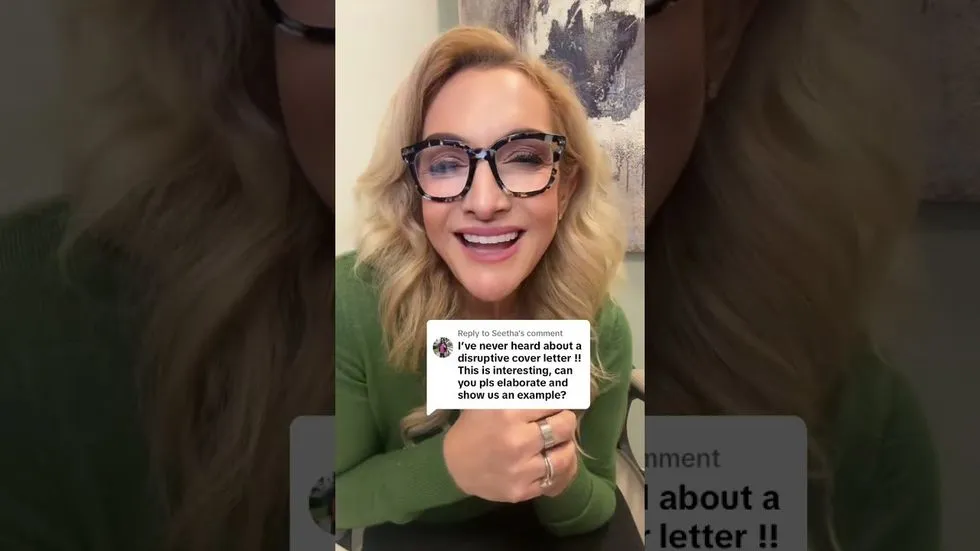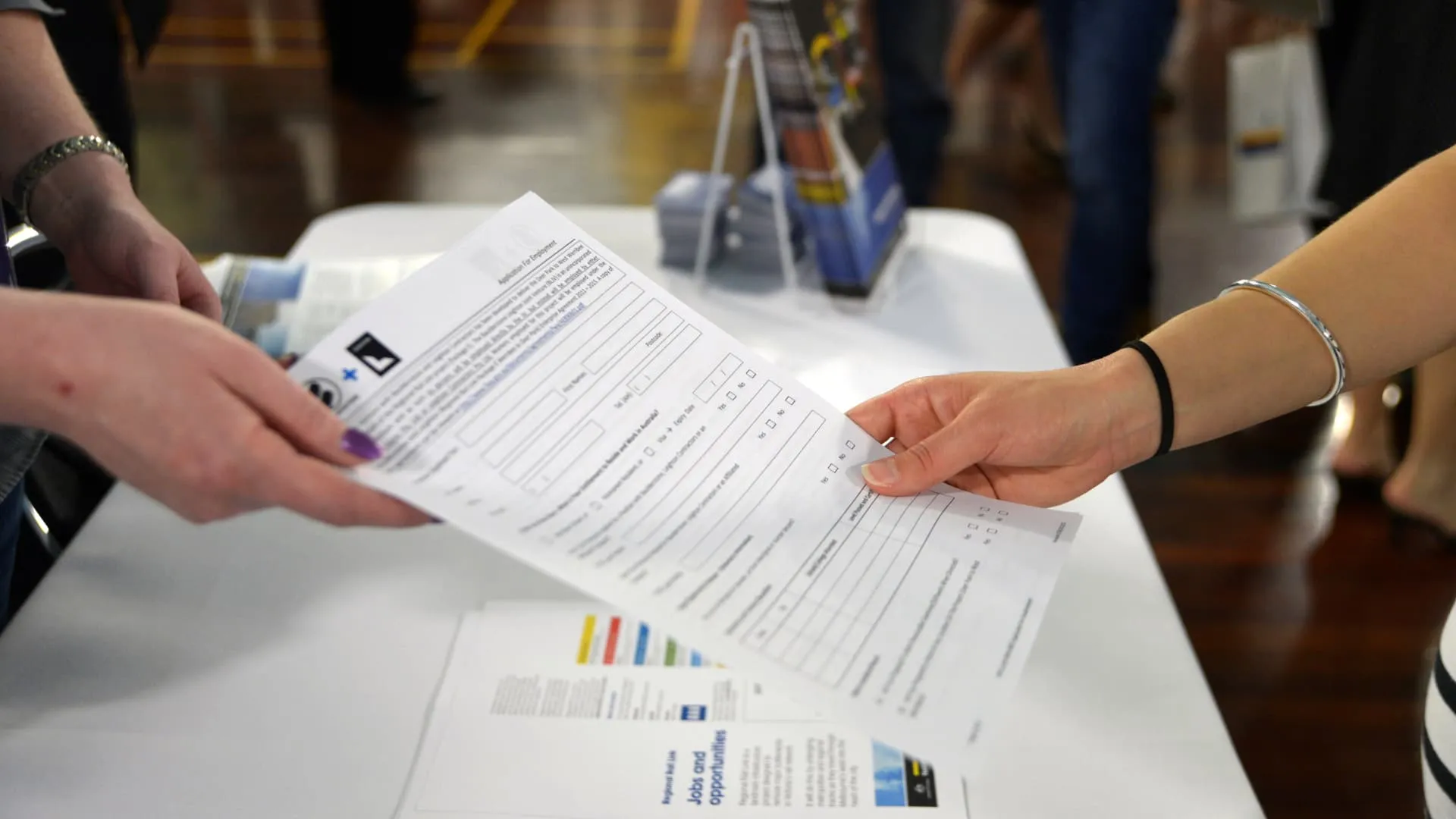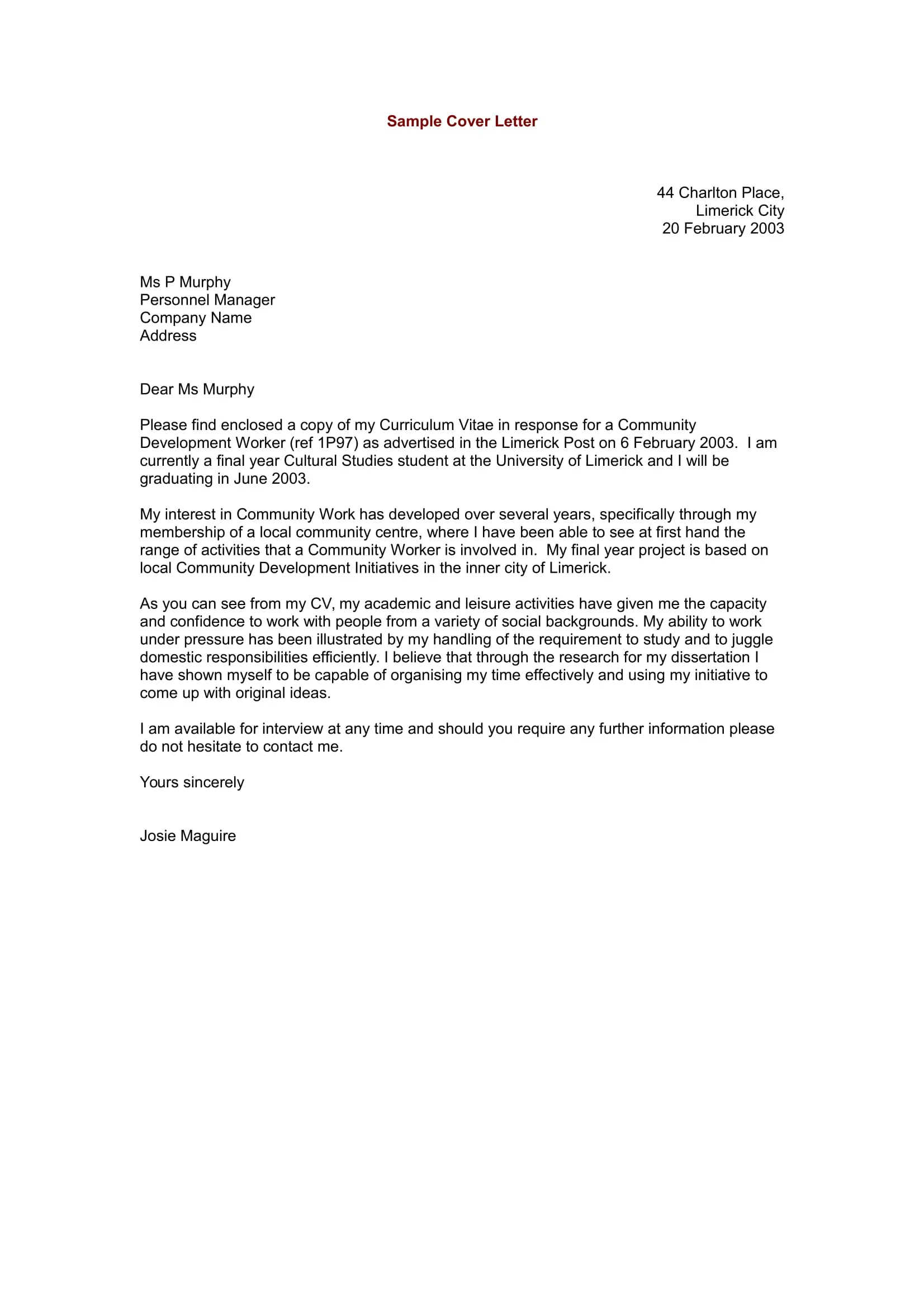Cover Letter Mistakes to Avoid
A well-crafted cover letter is your first opportunity to make a strong impression on a potential employer. It’s your chance to showcase your personality, highlight your relevant skills, and demonstrate your genuine interest in the position. However, many job seekers unknowingly sabotage their chances by making common cover letter mistakes. Avoiding these pitfalls can significantly increase your chances of landing an interview. This article will guide you through the most frequent errors, helping you create a cover letter that grabs attention and gets you noticed.
Generic and Uninspired Openings
One of the most significant cover letter mistakes is starting with a generic and uninspired opening. These openings often fail to capture the reader’s attention and can make your application seem unenthusiastic. A bland opening immediately signals a lack of personalization and effort, suggesting that you may have sent the same letter to multiple employers without tailoring it to their specific needs or the job requirements. The first few sentences are vital; they set the tone and determine whether the hiring manager will continue reading. A strong opening will pique their interest and make them want to learn more about you.
Why Generic Openings Fail

Generic openings fail because they lack specificity and fail to demonstrate your understanding of the role and the company. Hiring managers want to see that you’ve taken the time to understand their needs and that you have a genuine interest in the opportunity. A generic opening feels impersonal and suggests that you are merely going through the motions. It doesn’t highlight what makes you unique or why you’re the best fit for the role. These openings often focus on stating the obvious, such as ‘I am writing to express my interest in the position…’ which is both unoriginal and ineffective. These openings don’t offer any immediate value or compelling reasons to keep reading, which can lead to your application being overlooked.
Examples of Generic Openings
Common examples of generic openings to avoid include ‘I am writing to express my interest in the [job title] position advertised on [platform]’, ‘Please accept this letter as an application for the [job title] role’, or ‘I am writing to apply for the position of [job title]’. These phrases are commonplace and fail to differentiate you from the many other applicants using the same tired phrasing. They don’t indicate any specific reasons why you are interested in the particular role or company. This approach tells the hiring manager you are just looking for any job rather than specifically the one they are offering. It also lacks the energy needed to make a good impression.
How to Craft a Compelling Opening
To craft a compelling opening, start by researching the company and the specific role. Personalize your opening by mentioning something specific that caught your eye in the job description or on the company website. Consider mentioning a company value that resonates with you or a recent project that impressed you. You can also open with a brief statement of your most relevant skill, immediately capturing the hiring manager’s attention. Frame your opening as a statement about why you are a good fit and immediately provide a glimpse of your value. For instance, you could start with, ‘With my experience in X and a passion for Y, I am confident I can help [Company Name] achieve Z.’
Focusing Solely on Yourself

Another common mistake is focusing too heavily on yourself rather than on how you can benefit the employer. While it’s important to highlight your skills and experience, the cover letter should primarily demonstrate how your qualifications align with the company’s needs and how you can contribute to its success. When you focus excessively on what you want from the job, you miss the opportunity to demonstrate how you will bring value. Employers are looking for candidates who can solve their problems and help them achieve their goals. A cover letter focused on your needs will not only fail to resonate but might also imply a lack of understanding of the company’s priorities or the role’s requirements.
The Importance of Demonstrating Value
Demonstrating value means showing the employer how your skills and experiences can meet their specific needs. The cover letter should address what the company is looking for, and you should clearly articulate how you can deliver. This involves aligning your skills with the job description and providing concrete examples of your past successes. This approach moves beyond simply listing what you have done and allows the hiring manager to see how you can perform in the role. Showcasing how you have solved problems, improved processes, or helped a previous employer will make a significant difference in your application. Ultimately, demonstrating value is about proving that you are an asset.
How to Highlight Your Contributions
To highlight your contributions, use specific examples and quantify your achievements whenever possible. Instead of stating you have experience in ‘managing projects,’ describe how you successfully completed a particular project, what your role was, and what the results were. Use action verbs and focus on what you achieved. For instance, ‘Managed a team of 10 to successfully deliver a project X, resulting in a 15% increase in Y.’ Use the STAR method (Situation, Task, Action, Result) to structure your examples, making them clear and impactful. This approach provides evidence of your capabilities and lets the hiring manager envision you performing the role’s duties. This makes your application more credible and memorable.
Examples of Self-Focused Statements

Examples of self-focused statements include ‘I am looking for a challenging position where I can grow my skills,’ ‘I have excellent communication skills and am a team player,’ or ‘I am eager to learn and contribute to a successful company.’ These statements focus on your desires and lack any specific connection to the employer’s needs. They do not provide any tangible proof that your skills align with the role’s requirements or that you understand the company’s objectives. The hiring manager may think that this candidate is only interested in personal gain. Replace these statements with clear explanations of how your previous experiences can benefit the employer, directly addressing their requirements and showing how you can contribute to their goals. Use the STAR method to structure your answers.
Ignoring the Job Description
Failing to tailor your cover letter to the specific job description is a significant oversight. The job description is a roadmap detailing what the employer wants and needs. Ignoring this roadmap means missing crucial clues and failing to demonstrate that you have the required skills and experience. Tailoring your cover letter demonstrates your understanding of the role’s requirements and shows that you have the skills and experience necessary. A generic cover letter feels like a form letter. The hiring manager might not believe that you have the attention to detail or the interest in the particular position.
Why Tailoring Matters
Tailoring your cover letter shows you have read and understood the job description. It involves carefully analyzing the requirements and aligning your skills and experience with the specific needs of the role. It requires taking the time to understand the responsibilities, the required qualifications, and the company’s culture. Customizing your cover letter demonstrates your attention to detail, initiative, and genuine interest in the position. This level of attention helps you stand out by showing that you are invested in the role and the company. Tailoring the letter increases your chances of passing the initial screening process and getting an interview.
How to Research the Company and Role

To research the company and role, start by thoroughly reading the job description and the company’s website. Identify the key requirements, desired skills, and company values. Look at the company’s ‘About Us’ section, press releases, and social media to understand its mission, culture, and recent projects. Use keywords from the job description throughout your cover letter and resume. Show how your experience aligns with the role by providing specific examples. You may also research the hiring manager or the team you would be joining on LinkedIn to show an understanding of their work. Make sure to adjust your tone and language to suit the company’s style. A well-researched cover letter will make your application more compelling.
Highlighting Irrelevant Skills
Listing skills that are irrelevant to the job is another common error. While it’s good to showcase a broad range of capabilities, including skills that aren’t directly relevant to the role can distract the reader. Hiring managers have limited time and want to focus on the skills that directly contribute to the job’s responsibilities. Mentioning irrelevant skills can dilute your message and make it more difficult for the hiring manager to identify your key strengths. It could give the impression that you lack focus or that you’re not fully understanding the requirements of the position. Focus your cover letter on those qualifications that align with the job description.
Listing, Not Demonstrating, Skills
Many cover letters simply list skills without providing any context or demonstrating how those skills have been used. This approach is ineffective because it does not provide any evidence to support your claims. Listing a skill such as ‘proficient in project management’ is not enough. The hiring manager needs to see how you have applied this skill. They want concrete examples of your accomplishments. Instead of just listing skills, use specific examples and quantify your achievements. This can be achieved by sharing specific scenarios, projects, or experiences where you effectively used your skills and achieved positive results. The hiring manager will look for proof of your capabilities rather than just a list of your self-proclaimed skills.
The Power of the STAR Method

The STAR method (Situation, Task, Action, Result) is a powerful tool for demonstrating your skills effectively. When describing a skill, first, provide the situation or context. Then, explain the task or challenge you faced. Next, describe the action you took to address the situation. Finally, explain the result of your actions and quantify your achievements whenever possible. For example, instead of saying ‘Managed a project,’ you could use STAR to say ‘In the situation of a critical project delay, my task was to lead the recovery efforts. I took action by implementing a revised schedule and coordinating cross-functional teams. As a result, we delivered the project on time, saving the company $X.’ This method provides a clear, concise, and compelling picture of your skills and accomplishments. It makes your cover letter more engaging and memorable.
Providing Excessive Information
A cover letter should be concise and focused. Including excessive information, such as your entire work history or every skill you possess, can be overwhelming for the reader. Hiring managers are busy and want to quickly understand if you are a good fit. A long, rambling cover letter can distract from your most relevant qualifications and make it difficult to identify your key strengths. Lengthy cover letters also suggest poor communication skills, which can be a disadvantage in many professional roles. Keep your cover letter focused and tailor it to the specific job description. Remember, a cover letter should complement your resume and highlight the most important information.
Keeping it Concise and Focused
To keep your cover letter concise and focused, aim for a length of no more than one page. Prioritize the most relevant information and eliminate any unnecessary details. Focus on the key skills and experiences that align with the job requirements. Use clear, concise language and avoid jargon. Organize your thoughts in a logical order, and use headings and bullet points to improve readability. Before submitting, review your cover letter to remove redundant information and ensure it conveys your message clearly. A well-crafted, concise cover letter will make a better impression than a long, unfocused one. Make every word count, emphasizing the value you offer.
Avoid Technical Jargon

Technical jargon can confuse the reader and make your cover letter less accessible. While it’s important to demonstrate your technical expertise, avoid using jargon that the hiring manager may not understand. Use clear and simple language whenever possible. Explain complex concepts in terms that everyone can understand. Avoid industry-specific acronyms and abbreviations unless you are certain the reader will be familiar with them. If you must use technical terms, provide context or definitions to ensure the hiring manager can easily understand your message. A clear, jargon-free cover letter demonstrates your ability to communicate effectively, which is a critical skill in almost every professional role.
Sending a Mass-Produced Cover Letter
Sending a mass-produced cover letter is a significant mistake that immediately signals a lack of interest in the specific job or company. A mass-produced cover letter is a generic document that is not tailored to the specific requirements of the job or the company’s values. These letters are easy to spot because they contain generic openings, lack specific references to the job description, and fail to demonstrate any understanding of the company’s culture. Hiring managers can easily identify these generic applications. They often end up in the rejection pile. A generic letter is not a good investment of time or effort. It is much better to apply for fewer jobs, each with a personalized cover letter.
Why Personalization is Key
Personalization is key because it shows you have taken the time to understand the company and the role. This demonstrates your genuine interest and initiative. A personalized cover letter also allows you to highlight the skills and experiences that are most relevant to the job description, increasing your chances of getting an interview. By personalizing your cover letter, you also demonstrate your attention to detail, which is an important quality in most jobs. Personalizing includes researching the company, addressing the letter to a specific person, and highlighting the skills and experiences. Tailoring the cover letter to each job shows the hiring manager that you are serious about the opportunity. This increases the chance of your application getting reviewed. Sending a personalized cover letter provides a significant advantage.
Proofreading and Editing
Errors in grammar, spelling, and punctuation can damage your credibility and professionalism. A cover letter filled with mistakes makes it appear you lack attention to detail. It may make you appear careless or less educated. Proofreading and editing are essential steps in the application process. A cover letter should be free of any errors. Proofreading is the final step to ensure your document presents you in the best possible light. Take the time to meticulously review your cover letter before submitting it. A polished, error-free cover letter shows that you care about the details and that you respect the hiring manager’s time. A few minutes of careful review can greatly improve your chances.
Common Grammatical Errors to Avoid
Common grammatical errors to avoid include incorrect verb tenses, subject-verb disagreements, incorrect use of commas, and spelling mistakes. Other frequent errors include incorrect use of apostrophes, run-on sentences, and sentence fragments. These errors can distract the reader and make your writing less clear. They create a poor impression of your writing skills and professionalism. It is useful to use a grammar checker, such as Grammarly. Make sure to pay attention to the details. Read your cover letter aloud. Review it multiple times. Having someone else review your letter can catch errors that you might have missed. Avoiding these common errors will significantly enhance your chances of making a positive impression.
How to Proofread Effectively
Proofread your cover letter carefully to catch errors. Start by reading the letter slowly, focusing on each word. Then, check for spelling mistakes, grammatical errors, and punctuation errors. Read the letter aloud to listen for awkward phrasing and sentence structure problems. It is often useful to step away from your work for a period and return to it later with fresh eyes. Consider using a grammar checker tool, but don’t rely on it entirely. Review your document multiple times, each time focusing on a different aspect of the writing. Ask a friend or family member to proofread your cover letter. A second pair of eyes can catch errors you may have missed. Ensuring an error-free cover letter shows your commitment to quality.
Closing Thoughts
Creating an effective cover letter requires time and attention to detail. By avoiding the common mistakes mentioned above, you can significantly increase your chances of making a strong first impression. Focus on tailoring your letter to each job description, demonstrating your value to the employer, and presenting yourself professionally. Remember to always proofread your cover letter carefully. A well-crafted cover letter is a powerful tool in your job search. It is worth the effort and investment. Take the time to get it right, and your application will be more likely to stand out. With a compelling cover letter, you can show employers why you are a strong candidate.
